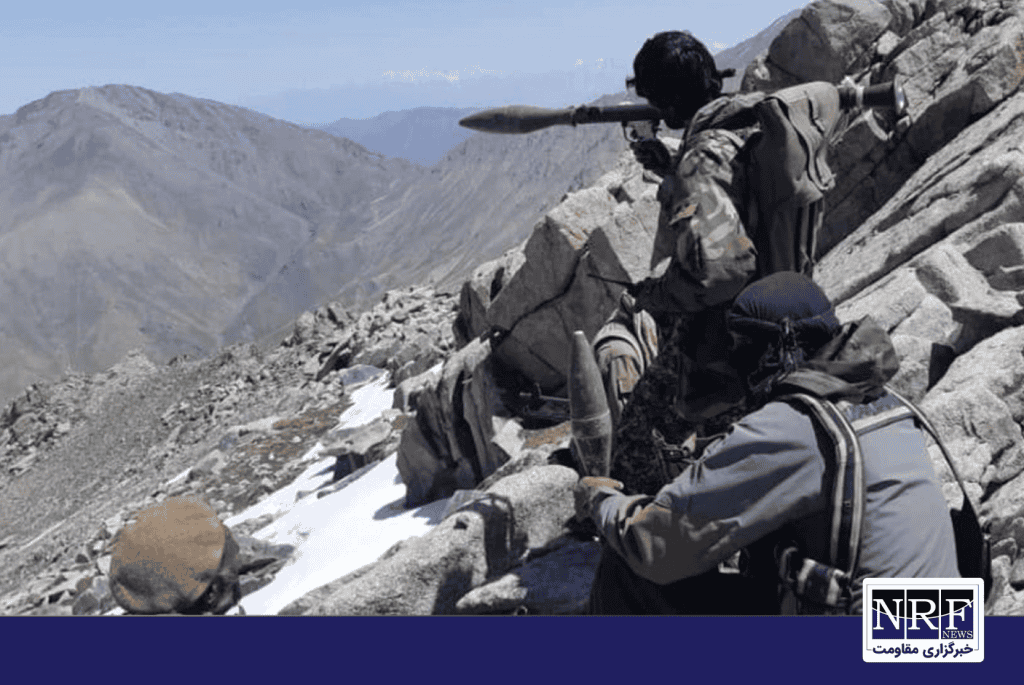
The Taliban is fighting to quash a multi-faceted resistance that is gaining strength, but the movement spearheaded by the National Resistance Front (NRF) is still too nascent to pose a threat to the Taliban’s rule. While the Taliban faces internal rifts and attacks from other radical Islamic terrorist groups, like the Islamic State, it is essential to remember that the anti-Taliban resistance groups also face a similar kaleidoscope of threats on an ever-evolving battlefield.
“We are not only fighting the Taliban,“ Ali Maisam Nazary, Head of Foreign Relations for the NRF, told FDD’s Long War Journal. “We are fighting Al Qaeda, the Islamic State, Tehrik-e Taliban Pakistan (TTP), and many other groups throughout Afghanistan.”
Ahmad Massoud Jr., son of legendary Mujahideen leader Ahmad Shah Massoud, leads the NRF, which has grown to become the largest and most active anti-Taliban resistance group. With a dedicated following in the U.S., the NRF is entering its third fighting season, primed to expand its operational footprint throughout the country. The NRF has claimed most of its recent attacks in Kabul. The NRF will likely focus on more targeted attacks following their unsuccessful defense of Panjshir in late 2021-2022.
“In our third year of fighting, our attacks are more targeted and strategic,” Mr. Nazar told Long War Journal.
The NRF’s natural support base is throughout northern Afghanistan, particularly in Panshjir province, which is also Massoud’s birthplace. However, the NRF acknowledged that it will need broad support base to achieve its democratic, decentralized and pluralistic vision of Afghanistan.
“After the fall of the previous government, remnants of the Afghan National Security Forces joined the NRF,” said Mr. Nazar, “But we also have Pashtuns, Tajiks, Uzbeks, Hazaras, and more inside the NRF.
The NRF is joined on the battlefield by the Afghan Freedom Front (AFF). Former Afghan National Army (ANA) Chief of General Staff and Acting Minister of Defense Yasin Zia leads the AFF. A former governor of Tarakh province, Zia’s AFF is also striking targets in Kabul after a self-imposed Eid ceasefire recently ended.
Launched in March 2022, the AFF wasted no time attacking the Taliban a month later. While they do not claim attacks at nearly the same rate as the NRF, the AFF shares a similar strategy of conducting precise Taliban attacks on targets that are both strategically and symbolically important.
“Over the last few years, our attacks have improved,” Yasin Zia told The Long War Journal. “Our intelligence network is expanding.”
While the AFF and NRF are distinct groups, they are already collaborating, which will be essential for future efforts to topple the Taliban. For the resistance to succeed, however, they will need support from forces familiar with fighting the Taliban in southern Afghanistan. Former ANA 215th Corps Commander, Lieutenant General Sami Sadat, provides the resistance with that experience.
Sadat’s Afghan United Front (AUF), who has testified before Congress, is an important resistance leader on and off the battlefield. Joined by Brigadier General Khoshal Sadat (unrelated), both men provide a deep level of operational and tactical experience throughout the Afghan battlefield.
“AUF’s vision is to free Afghanistan and return it to constitutional order,” LTG Sadat told The Long War Journal. “We are the new generation of Afghan leaders.”
While the AUF has not publicly claimed any attacks on the battlefield, it is likely only a matter of time. For now, however, they remain focused on fighting the Taliban politically. Similarly, the National Resistance Council for the Salvation of Afghanistan has called for active military and political resistance against the Taliban.
Anti-Soviet mujahideen commanders dominate this resistance council. Former Afghan Vice President Marshall Abdul Rashid Dostum, former Balkh Governor Atta Mohammad Noor, Hazara leader Mohammad Mohaqiq, and Ittehad al-Islami leader Abdul Rasul Sayyaf, among others, are on the group’s board of directors. While the group’s leaders held significant sway in the previous failed government, it is hard to imagine how they will gain traction inside a country whose population is distrustful of both the Taliban and leaders tied intimately to the previous regime.
Separately, former Vice President Amurallah Saleh’s Green Trend focuses on intelligence operations. Mr. Saleh, who was the former head of Afghanistan’s premier intelligence service, the National Directorate of Security, recently exposed the names of Taliban intelligence officers and the problem of ghost soldiers inside the Taliban’s new Afghan Army.
Other smaller groups also litter the battlefield. As is often the case, it is difficult to substantiate their claims. For example, the Afghan Liberation Movement (ALM) claims to be active, primarily in Kandahar. After a falling out with the previous leader, Abdul Mateen Sulaimankhail, a former Afghan Army special forces commander, Naser Waziri now leads the ALM.
“We started in 2022 and focused almost exclusively on collecting intelligence,” Mr. Waziri told The Long War Journal. “Now we are starting to launch attacks.”
The anti-Taliban resistance groups are increasing in size and diversity. While their attacks against the Taliban will increase this year, the only chance for “the resistance” to overthrow the Taliban is to set aside their differences and form a cohesive organization that can pool resources and fighters. This will hopefully spur outside support and safe havens in northern Afghanistan. Unfortunately, that is not foreseeable in the near term, and few will take them seriously until then.







